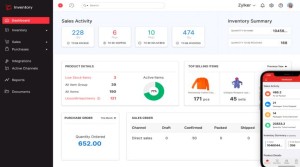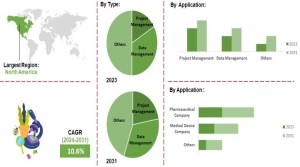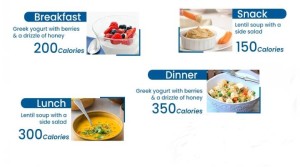Things You Can Do to Get the Maximum Fuel Average of Your Car
By adopting good driving habits, maintaining your vehicle, and paying attention to factors that affect fuel consumption, you can reduce fuel costs.
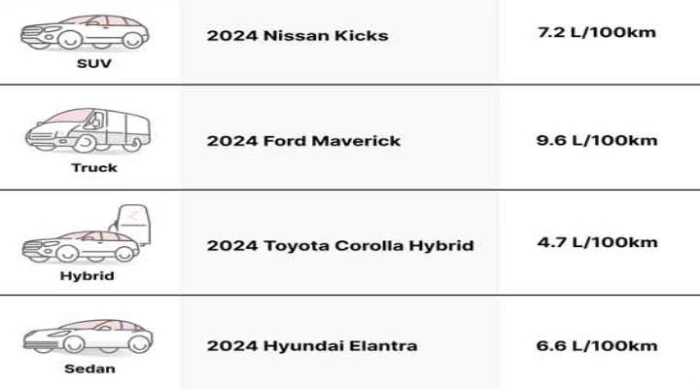
Nowadays, gas prices keep going up and down, and at the same time we’re worried about the environment. So, many people who own cars are trying to use less gas. Achieving better fuel mileage saves money and reduces carbon emissions, contributing to a cleaner environment. Fortunately, various simple yet effective strategies exist to improve your car’s coverage.
By adopting good driving habits, maintaining your vehicle, and paying attention to factors that affect fuel consumption, you can enhance your car’s efficiency and reduce fuel costs.
-
Driving Habits
Your driving style is one of the most significant factors affecting fuel efficiency. Adopting smoother, more cautious driving habits can go a long way toward saving fuel. First and foremost, avoid aggressive driving behaviors such as rapid acceleration, sudden braking, and speeding. These actions put a higher strain on your engine, resulting in unnecessary fuel consumption. Instead, drive at a consistent, moderate speed and anticipate traffic flow to avoid frequent stops. For instance, easing into accelerations and coasting whenever possible will conserve fuel and reduce wear and tear on your car.
Additionally, driving at an optimal speed can significantly improve your fuel economy. Most cars achieve peak fuel efficiency between 45 and 65 mph (70 to 105 km/h). Driving above this range, especially on highways, drastically reduces mileage as aerodynamic drag increases at higher speeds. Cruise control can be a helpful tool for maintaining a steady speed during long trips, allowing your car to burn fuel more efficiently.
-
Vehicle Maintenance
Regular maintenance is essential for improving fuel economy. A well-maintained car will perform more efficiently and consume less fuel. Make sure your tires have the right amount of air. If they have too little air, it makes it harder for your car to move. This makes your engine work harder and uses more gas. Check your tires often and keep them filled according to the manufacturer’s car maker’s instructions. Getting your wheels aligned can also help your car use less gas.
Routine oil changes are crucial, too. Old or dirty oil makes the engine work harder, decreasing efficiency. Using the correct grade of motor oil, as specified in your car’s manual, ensures that your vehicle runs smoothly and efficiently. In addition, replacing clogged air filters can significantly improve fuel mileage by allowing the engine to breathe more easily. Clogged filters reduce airflow, forcing the engine to use more fuel to maintain power. Regularly servicing other vital components, such as the fuel injectors and spark plugs, ensures that your engine is firing correctly and using fuel as efficiently as possible.
-
Weight Reduction and Aerodynamics
Reducing your car’s weight can also improve its anatomy. The heavier your vehicle, the more fuel it requires to move. Remove unnecessary items from the car’s trunk and car seat. If your vehicle has a lot of extra weight, it will use more gas, especially if it’s small. For every 100 pounds of extra stuff, your car might use 1-2% more gas.
Minimizing aerodynamic drag can enhance fuel efficiency and shed excess weight. Roof racks and bike carriers may be convenient for road trips, but they create extra wind resistance, forcing your engine to work harder. Removing unused accessories will reduce drag and improve mileage, especially at high speeds. Keeping windows closed at highway speeds also helps reduce drag, as open windows disrupt the car’s aerodynamic pro-car’s increasing fuel consumption.
-
Driving Conditions
The type of fuel you use and the conditions you drive in can also affect your fuel economy. Always use the recommended grade of gasoline or diesel for your car, as using a lower-quality fuel can decrease performance and efficiency. When it’s cold outside, let your vehicle warm up before driving. Don’t let your car take too long, especially if it’s newer. It doesn’t sit and won’t be up for a long time. Try to drive when there’s less traffic; you won’t have to sit in jams for long.
To achieve maximum fuel efficiency, focusing on various strategies related to driving habits, vehicle maintenance, and mechanical modifications is essential. Fuel economy is not only about saving money but also reducing environmental impact.
Various Steps Involved in Reducing Fuel Consumption
Let’s explore the steps to improve car mileage, reduce fuel consumption, and ways to optimize the overall performance of your car.
Steps to Improve Car’s Mileage
Adopting proper driving techniques is one of the primary steps to improving car mileage. Accelerating gradually and avoiding aggressive driving behaviors like sudden braking or rapid acceleration reduces fuel consumption. It’s also crucial to maintain a steady speed, especially on highways. By using cruise control, you can maintain consistent speeds, reducing the strain on your engine and thus consuming less fuel. Additionally, it’s helpful to plan routes ahead of time to avoid traffic congestion and stop-and-go driving situations, which can drain your car’s fuel quickly.
Reducing Fuel Consumption
One effective way to reduce fuel consumption is to lighten your vehicle’s load. Carrying unnecessary weight, such as excess luggage or equipment, increases fuel usage. Also, driving at optimal speeds can significantly impact fuel efficiency. Research suggests that most cars are designed to be fuel-efficient when travelling between 50 and 60 mph. Exceeding this range can rapidly increase fuel consumption as the car must work harder to overcome air resistance.
Factors that Increase Fuel Consumption
Several factors contribute to increased fuel consumption, which can be controlled with mindful driving and maintenance habits. Aggressive driving, which includes hard braking, quick acceleration, and speeding, is a significant contributor. Driving in hilly areas can also cause fuel consumption to rise due to the need for more power when climbing. Additionally, underinflated tires create more rolling resistance, forcing the engine to work harder. Ensuring your tires are correctly inflated to the manufacturer’s recommendations can help save fuel. Poor vehicle maintenance, such as clogged air filters or dirty oil, can reduce engine efficiency and increase fuel usage.
Valuable Ways to Save Fuel
There are numerous ways to save fuel, starting with regular vehicle maintenance. Using high-quality lubricants that reduce friction can help the engine operate more efficiently. Additionally, driving with windows closed at high speeds reduces aerodynamic drag, thus saving fuel. Avoid idling for extended periods, as well. Turning off the engine after waiting more than a minute can prevent unnecessary fuel waste. Simple habits like avoiding excessive use of the air conditioning system and keeping your car’s trunk clear of heavy items can also make a noticeable difference.
Mechanically Reduce Fuel Consumption
Beyond driving habits, mechanical ways to improve fuel efficiency exist. Regular maintenance of the engine, air filters, and fuel injectors ensures the car runs smoothly and efficiently. Dirty air filters and malfunctioning injectors can cause the engine to burn more fuel. Using synthetic oil that offers better lubrication can also improve mileage. Proper wheel alignment reduces drag and ensures all components work efficiently, helping mechanically minimize fuel consumption.
Driving Slowly to Reduce Fuel Consumption
Driving at slower, consistent speeds is one of the simplest ways to reduce fuel consumption. The higher the speed, the more fuel the car consumes due to increased aerodynamic drag and engine workload. Driving moderately, especially on highways, allows the car’s engine to work more efficiently. Avoiding unnecessary braking and acceleration will create a smoother, more fuel-efficient driving experience.
Modifications for Fuel Economy
Certain modifications can improve a car’s fuel economy. Installing low-rolling-resistance tires reduces the friction between the tires and the road, allowing the vehicle to move more freely and consume less fuel. Additionally, aerodynamic modifications, such as installing a rear spoiler or removing roof racks, can decrease wind resistance and improve fuel efficiency. Upgrading to lighter materials for body parts and wheels reduces fuel consumption by lowering the vehicle’s overall weight. Moreover, tuning the engine for better efficiency and ensuring the fuel system operates at peak performance can lead to long-term savings at the pump.
By implementing these strategies, you can more cautiously optimize your car’s fuel efficiency over the long run, maintain your vehicle correctly, reduce weight and drag, and be mindful of driving conditions to contribute to better fuel economy. These small changes can significantly extend the time between visits to the gas station and reduce your environmental impact.
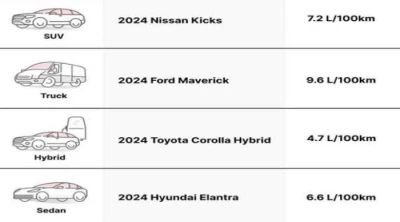
Nowadays, gas prices keep going up and down, and at the same time we’re worried about the environment. So, many people who own cars are trying to use less gas. Achieving better fuel mileage saves money and reduces carbon emissions, contributing to a cleaner environment. Fortunately, various simple yet effective strategies exist to improve your car’s coverage.
By adopting good driving habits, maintaining your vehicle, and paying attention to factors that affect fuel consumption, you can enhance your car’s efficiency and reduce fuel costs.
-
Driving Habits
Your driving style is one of the most significant factors affecting fuel efficiency. Adopting smoother, more cautious driving habits can go a long way toward saving fuel. First and foremost, avoid aggressive driving behaviors such as rapid acceleration, sudden braking, and speeding. These actions put a higher strain on your engine, resulting in unnecessary fuel consumption. Instead, drive at a consistent, moderate speed and anticipate traffic flow to avoid frequent stops. For instance, easing into accelerations and coasting whenever possible will conserve fuel and reduce wear and tear on your car.
Additionally, driving at an optimal speed can significantly improve your fuel economy. Most cars achieve peak fuel efficiency between 45 and 65 mph (70 to 105 km/h). Driving above this range, especially on highways, drastically reduces mileage as aerodynamic drag increases at higher speeds. Cruise control can be a helpful tool for maintaining a steady speed during long trips, allowing your car to burn fuel more efficiently.
-
Vehicle Maintenance
Regular maintenance is essential for improving fuel economy. A well-maintained car will perform more efficiently and consume less fuel. Make sure your tires have the right amount of air. If they have too little air, it makes it harder for your car to move. This makes your engine work harder and uses more gas. Check your tires often and keep them filled according to the manufacturer’s car maker’s instructions. Getting your wheels aligned can also help your car use less gas.
Routine oil changes are crucial, too. Old or dirty oil makes the engine work harder, decreasing efficiency. Using the correct grade of motor oil, as specified in your car’s manual, ensures that your vehicle runs smoothly and efficiently. In addition, replacing clogged air filters can significantly improve fuel mileage by allowing the engine to breathe more easily. Clogged filters reduce airflow, forcing the engine to use more fuel to maintain power. Regularly servicing other vital components, such as the fuel injectors and spark plugs, ensures that your engine is firing correctly and using fuel as efficiently as possible.
-
Weight Reduction and Aerodynamics
Reducing your car’s weight can also improve its anatomy. The heavier your vehicle, the more fuel it requires to move. Remove unnecessary items from the car’s trunk and car seat. If your vehicle has a lot of extra weight, it will use more gas, especially if it’s small. For every 100 pounds of extra stuff, your car might use 1-2% more gas.
Minimizing aerodynamic drag can enhance fuel efficiency and shed excess weight. Roof racks and bike carriers may be convenient for road trips, but they create extra wind resistance, forcing your engine to work harder. Removing unused accessories will reduce drag and improve mileage, especially at high speeds. Keeping windows closed at highway speeds also helps reduce drag, as open windows disrupt the car’s aerodynamic pro-car’s increasing fuel consumption.
-
Driving Conditions
The type of fuel you use and the conditions you drive in can also affect your fuel economy. Always use the recommended grade of gasoline or diesel for your car, as using a lower-quality fuel can decrease performance and efficiency. When it’s cold outside, let your vehicle warm up before driving. Don’t let your car take too long, especially if it’s newer. It doesn’t sit and won’t be up for a long time. Try to drive when there’s less traffic; you won’t have to sit in jams for long.
To achieve maximum fuel efficiency, focusing on various strategies related to driving habits, vehicle maintenance, and mechanical modifications is essential. Fuel economy is not only about saving money but also reducing environmental impact.
Various Steps Involved in Reducing Fuel Consumption
Let’s explore the steps to improve car mileage, reduce fuel consumption, and ways to optimize the overall performance of your car.
Steps to Improve Car’s Mileage
Adopting proper driving techniques is one of the primary steps to improving car mileage. Accelerating gradually and avoiding aggressive driving behaviors like sudden braking or rapid acceleration reduces fuel consumption. It’s also crucial to maintain a steady speed, especially on highways. By using cruise control, you can maintain consistent speeds, reducing the strain on your engine and thus consuming less fuel. Additionally, it’s helpful to plan routes ahead of time to avoid traffic congestion and stop-and-go driving situations, which can drain your car’s fuel quickly.
Reducing Fuel Consumption
One effective way to reduce fuel consumption is to lighten your vehicle’s load. Carrying unnecessary weight, such as excess luggage or equipment, increases fuel usage. Also, driving at optimal speeds can significantly impact fuel efficiency. Research suggests that most cars are designed to be fuel-efficient when travelling between 50 and 60 mph. Exceeding this range can rapidly increase fuel consumption as the car must work harder to overcome air resistance.
Factors that Increase Fuel Consumption
Several factors contribute to increased fuel consumption, which can be controlled with mindful driving and maintenance habits. Aggressive driving, which includes hard braking, quick acceleration, and speeding, is a significant contributor. Driving in hilly areas can also cause fuel consumption to rise due to the need for more power when climbing. Additionally, underinflated tires create more rolling resistance, forcing the engine to work harder. Ensuring your tires are correctly inflated to the manufacturer’s recommendations can help save fuel. Poor vehicle maintenance, such as clogged air filters or dirty oil, can reduce engine efficiency and increase fuel usage.
Valuable Ways to Save Fuel
There are numerous ways to save fuel, starting with regular vehicle maintenance. Using high-quality lubricants that reduce friction can help the engine operate more efficiently. Additionally, driving with windows closed at high speeds reduces aerodynamic drag, thus saving fuel. Avoid idling for extended periods, as well. Turning off the engine after waiting more than a minute can prevent unnecessary fuel waste. Simple habits like avoiding excessive use of the air conditioning system and keeping your car’s trunk clear of heavy items can also make a noticeable difference.
Mechanically Reduce Fuel Consumption
Beyond driving habits, mechanical ways to improve fuel efficiency exist. Regular maintenance of the engine, air filters, and fuel injectors ensures the car runs smoothly and efficiently. Dirty air filters and malfunctioning injectors can cause the engine to burn more fuel. Using synthetic oil that offers better lubrication can also improve mileage. Proper wheel alignment reduces drag and ensures all components work efficiently, helping mechanically minimize fuel consumption.
Driving Slowly to Reduce Fuel Consumption
Driving at slower, consistent speeds is one of the simplest ways to reduce fuel consumption. The higher the speed, the more fuel the car consumes due to increased aerodynamic drag and engine workload. Driving moderately, especially on highways, allows the car’s engine to work more efficiently. Avoiding unnecessary braking and acceleration will create a smoother, more fuel-efficient driving experience.
Modifications for Fuel Economy
Certain modifications can improve a car’s fuel economy. Installing low-rolling-resistance tires reduces the friction between the tires and the road, allowing the vehicle to move more freely and consume less fuel. Additionally, aerodynamic modifications, such as installing a rear spoiler or removing roof racks, can decrease wind resistance and improve fuel efficiency. Upgrading to lighter materials for body parts and wheels reduces fuel consumption by lowering the vehicle’s overall weight. Moreover, tuning the engine for better efficiency and ensuring the fuel system operates at peak performance can lead to long-term savings at the pump.
By implementing these strategies, you can more cautiously optimize your car’s fuel efficiency over the long run, maintain your vehicle correctly, reduce weight and drag, and be mindful of driving conditions to contribute to better fuel economy. These small changes can significantly extend the time between visits to the gas station and reduce your environmental impact.
Conversation
Latest Blogs
© Blog CoolCalculator, Explore CoolCalculator, your destination for the latest insights, tips, and updates on the world of online calculators. Stay informed and make your calculations smarter with our blog. ,
Designed
by Saad Media Team , Team Lead M.Rizwan Akhtar




